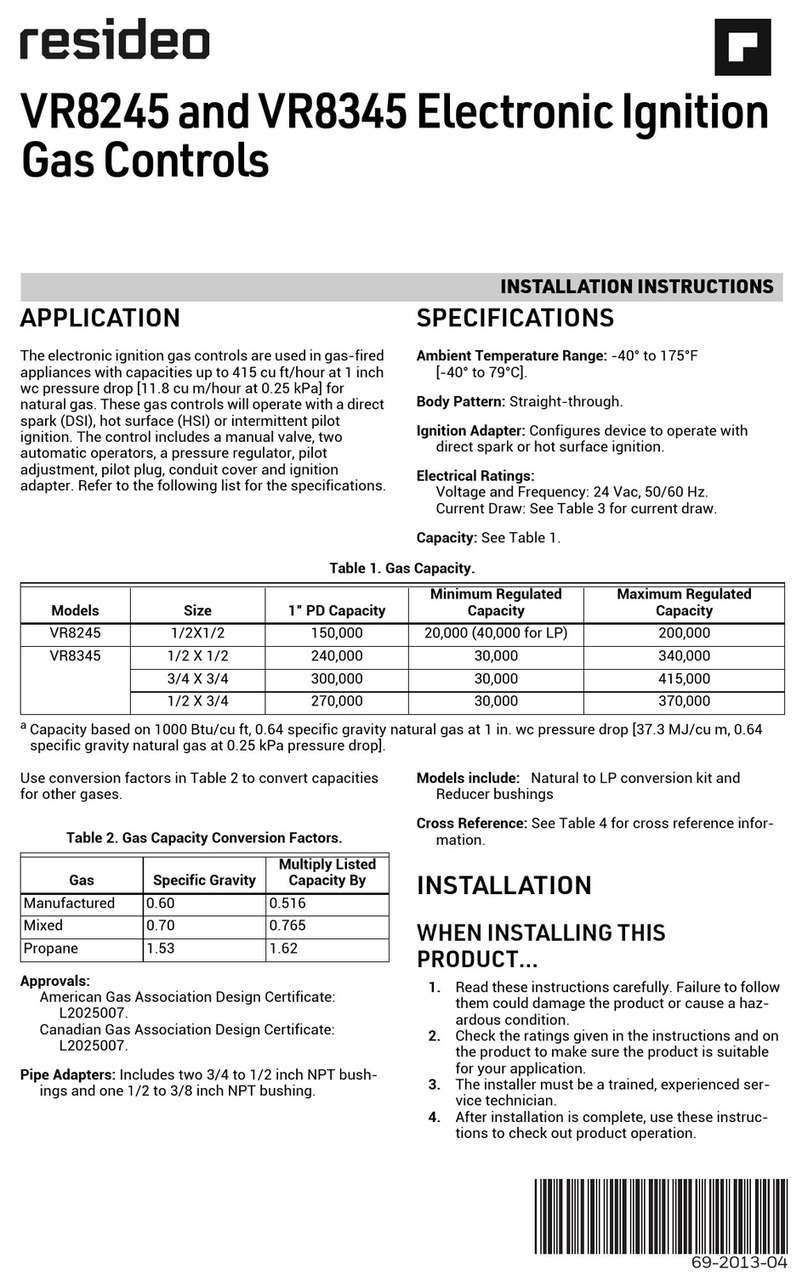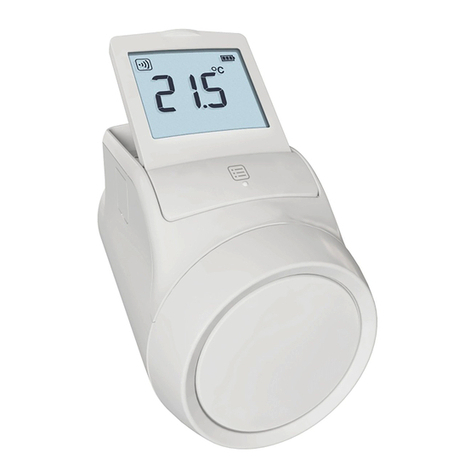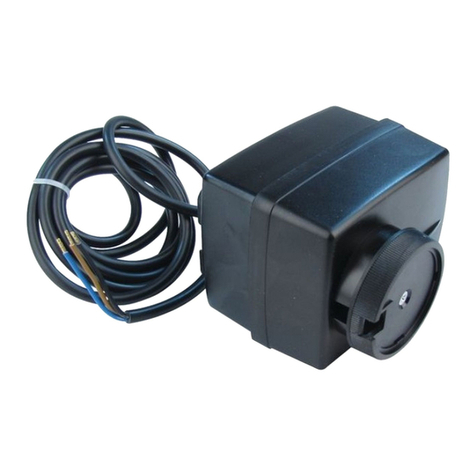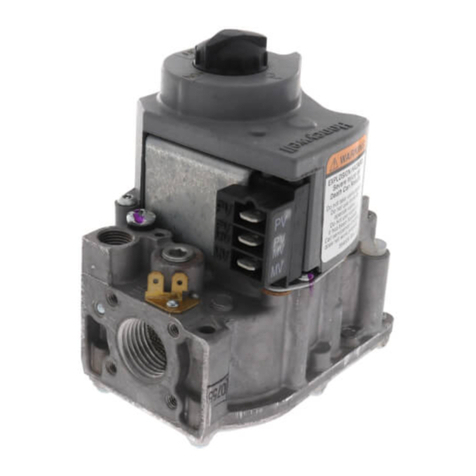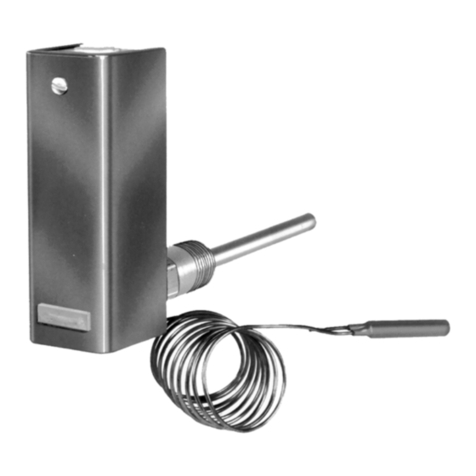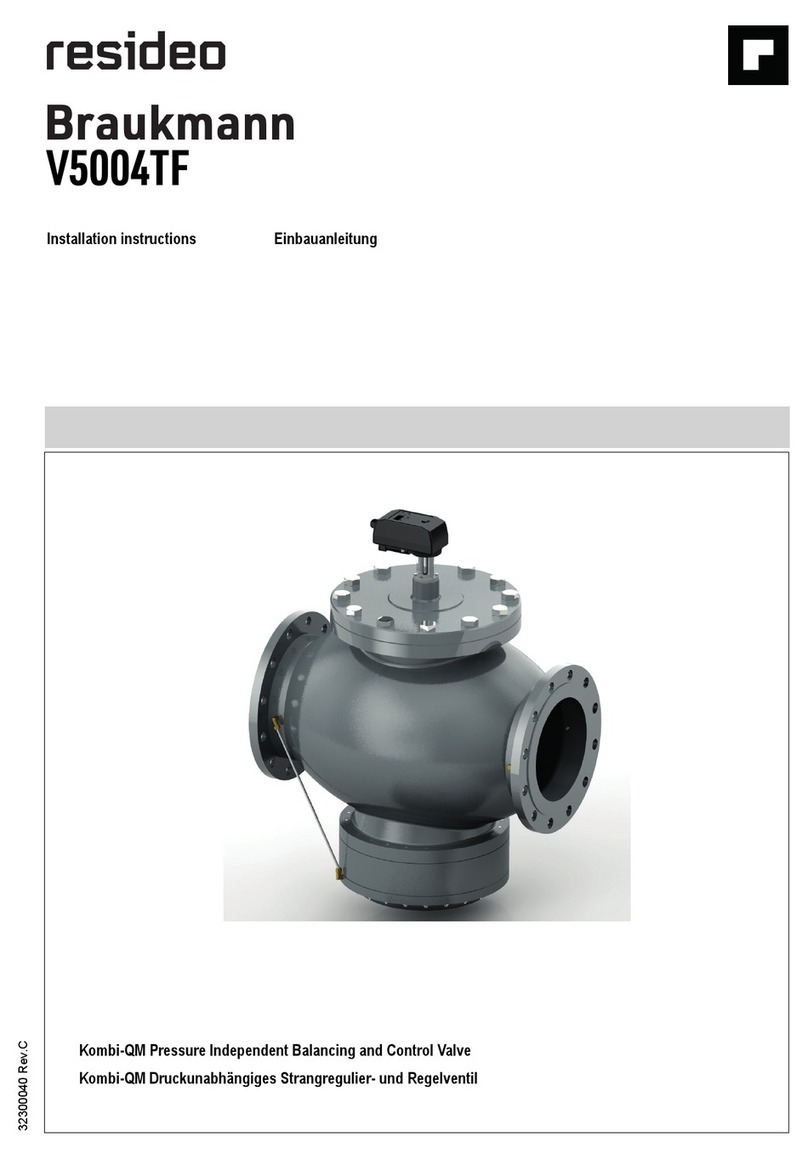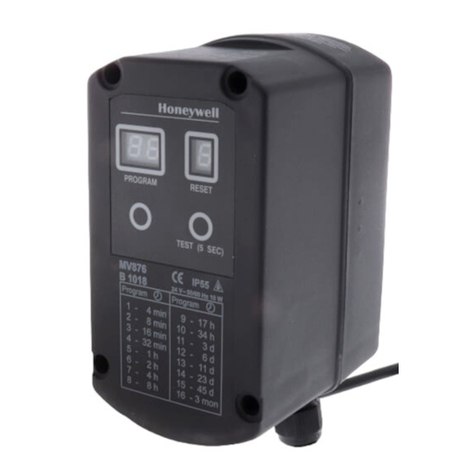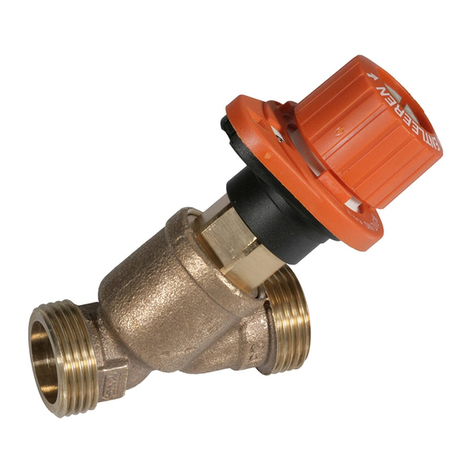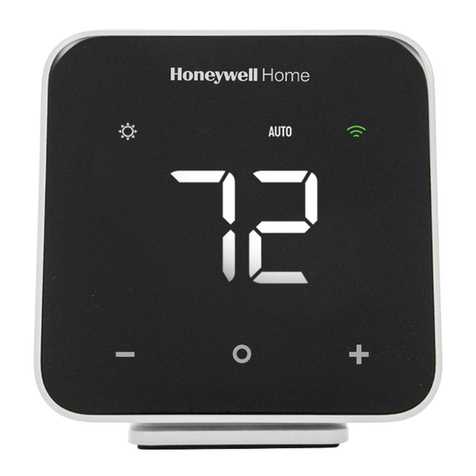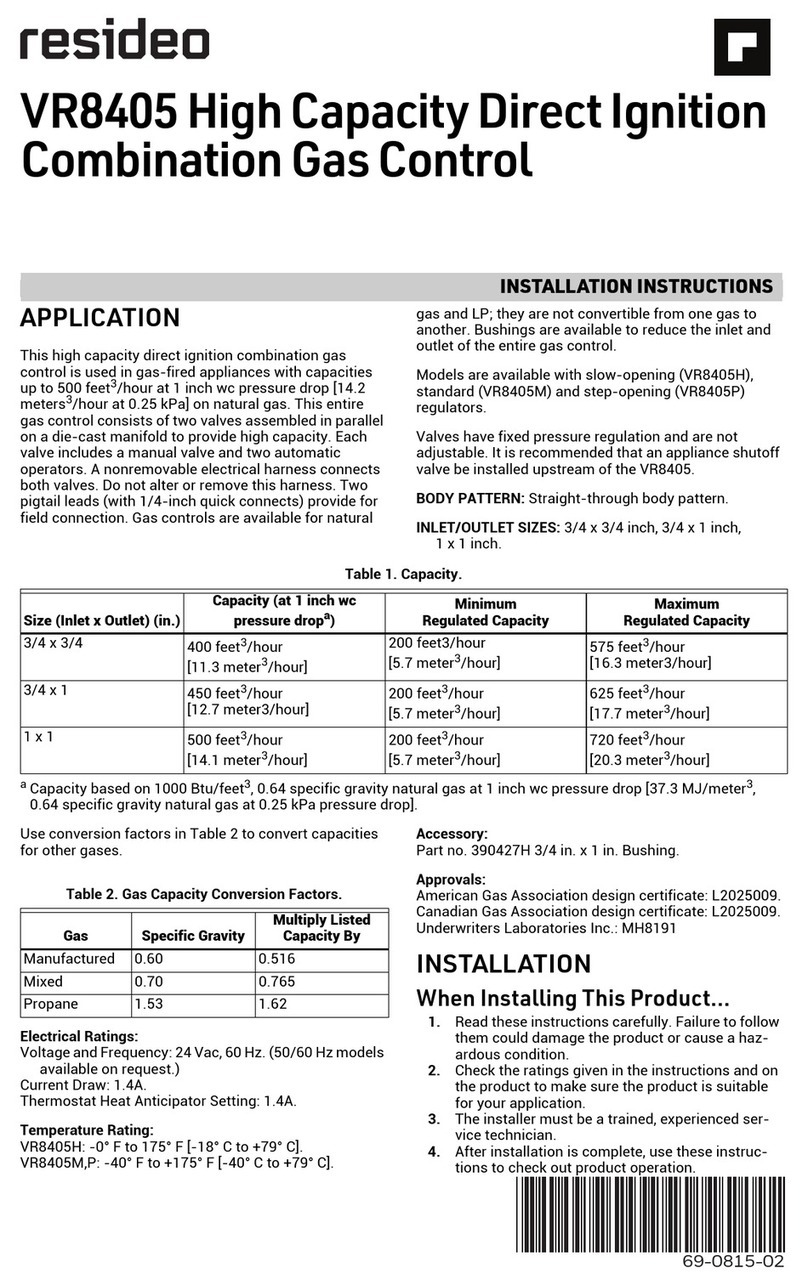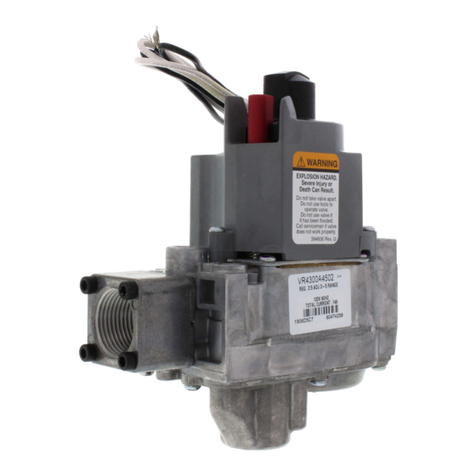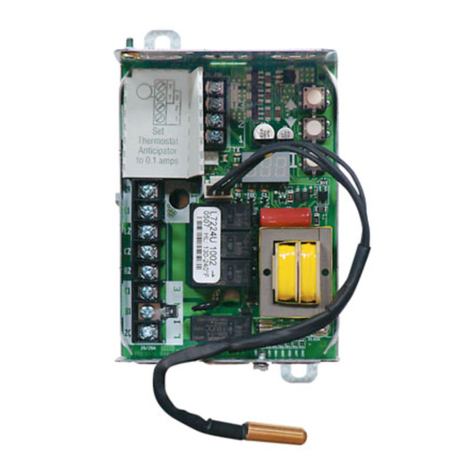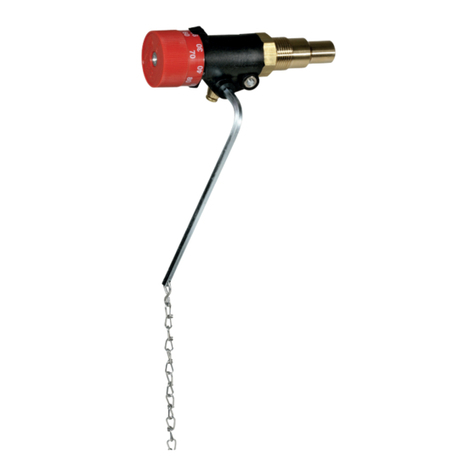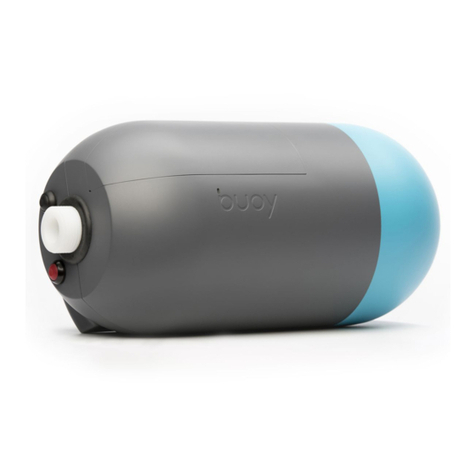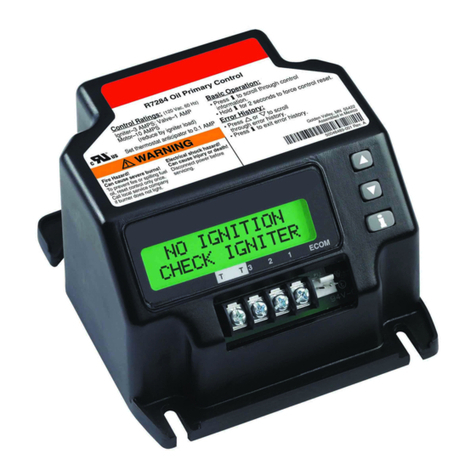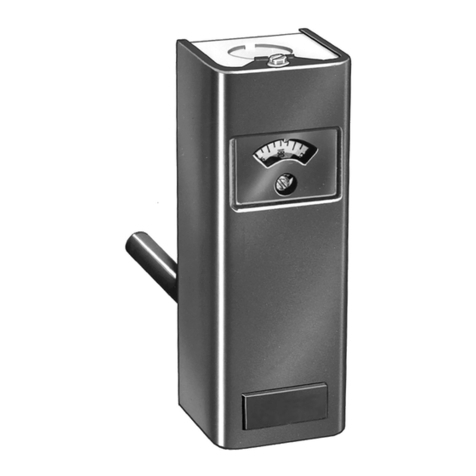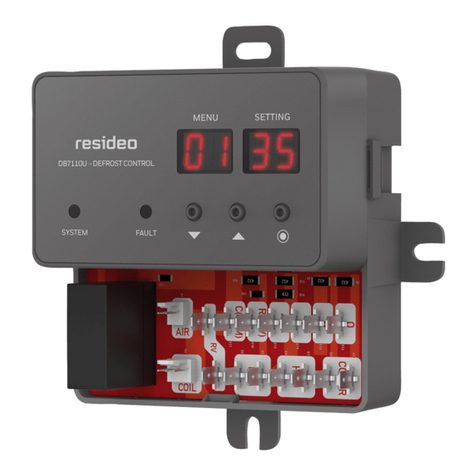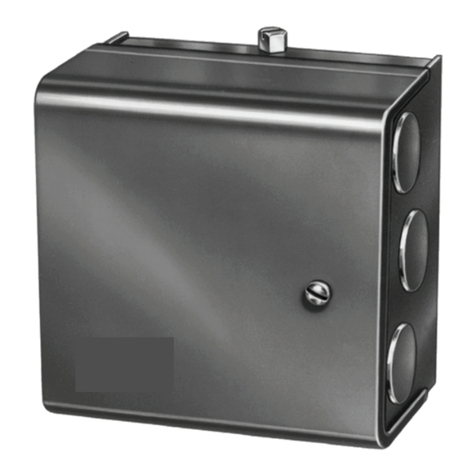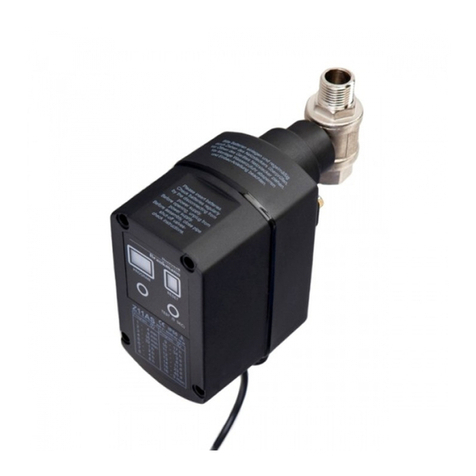
CONTINUOUS PILOT COMBINATION GAS CONTROLS
69-0421—03 2
Never apply a jumper across or short the valve
coil terminals. This may burn out the heat
anticipator in the thermostat.
IMPORTANT:
These gas controls are shipped with protective
seals over inlet and outlet tappings. Do not
remove seals until ready to connect piping.
Follow the appliance manufacturer instructions if
available; otherwise, use the instructions provided below.
CONVERTING BETWEEN NATURAL AND LP GAS
FIRE OR EXPLOSION HAZARD CAN CAUSE
PROPERTY DAMAGE, SEVERE INJURY, OR
DEATH.
1. Do not use a gas control set for natural gas on
an LP gas system or use a gas control set for
LP gas on a natural gas system.
2. When making conversion, main pilot burner
orifice must be changed to meet appliance
manufacturer specifications.
Refer to appliance manufacturer instructions for orifice
specifications and changeover procedure. Gas controls
are factory-set for natural (and manufactured) or LP gas.
Do not attempt to use a control set for natural
(manufactured) gas on LP gas, or a control set for LP on
natural (manufactured) gas.
Gas controls with standard or slow opening regulators
can be converted from one gas to the other with a
conversion kit (ordered separately). Order Conversion Kit
part no. 393691 to convert from natural (manufactured)
to LP gas; order Conversion Kit part no. 394588 to
convert from LP to natural (manufactured) gas. Gas
controls with step opening regulators cannot be
converted.
INSTALL ADAPTERS TO CONTROL
If adapters are to be installed on the gas control, mount
them as follows:
Flanges:
1. Choose the appropriate flange for your application.
NOTE: A right angle inlet flange cannot be used with
ECO connected.
2. Remove seal over gas control inlet or outlet.
3. Assure that the O-ring is fitted in the groove of
flange. If the O-ring is not attached or is missing,
do not use the flange.
4. With O-ring facing valve, align the screw holes on
the gas control with the holes in the flange. Insert
and tighten the screws provided with the flange.
See Fig. 1. Tighten the screws to 25 in. pounds of
torque to provide a gas tight seal.
Bushings:
1. Remove seal over gas control inlet or outlet.
2. Apply moderate amount of good quality pipe com-
pound to bushing, leaving two end threads bare. On
LP installation, use compound resistant to LP gas.
Do not use Teflon tape.
3. Insert bushing in control and thread pipe carefully
into bushing until tight.
Complete instructions below for installing piping,
installing gas control, connecting pilot gas tubing,
thermocouple and wiring. Make certain the leak test you
perform on the control after completing the installation
includes leak testing the adapters and screws. If you use
a wrench on the gas control after flanges are installed,
use the wrench only on the flange, not on the control.
Fig. 1. Install flange to gas control
USING ADAPTERS TO SOLVE SWING RADIUS PROBLEMS
In some field service applications, it is difficult or
impossible to thread the gas control on to the gas supply
pipe because of space limitations. This problem can be
resolved in many instances by using an adapter. Install
the adapter on the end of the supply pipe in place of the
gas control, following the same precautions and
instructions that are used for installing the gas control.
After the adapter is installed, attach the gas control to
the adapter as outlined above. Note that using an
adapter increases the overall length of the gas control.
LOCATION
The combination gas control is mounted in the appliance
vestibule on the gas manifold. If this is a replacement
application, mount the gas control in the same location
as the old control.
Do not locate the gas control where it may be affected by
steam cleaning, high humidity, dripping water, corrosive
chemicals, dust or grease accumulation, or excessive
heat. To assure proper operation, follow these guidelines:
• Locate gas control in a well-ventilated area.
• Mount gas control high enough above the cabinet
bottom to avoid exposure to flooding or splashing
water.
• Assure the ambient temperature does not exceed the
ambient temperature ratings for each component.
• Cover gas control if appliance is cleaned with water,
steam, or chemicals to avoid dust and grease
accumulation.
• Avoid locating gas control where exposure to
corrosive chemical fumes or dripping water is likely.
Install Piping to Control
All piping must comply with local codes and ordinances
or with the National Fuel Gas Code (ANSI Z223.1
M2913A
9/64 INCH HEX SCREWS (4)
GAS CONTROL OUTLET
FLANGE
1
1DO NOT OVERTIGHTEN SCREWS.
TIGHTEN TO 25 INCH-POUNDS.

